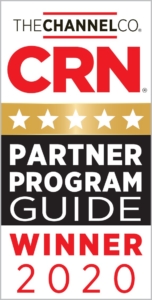You’ve been asked to defend your organization from a myriad of threats: state sponsored attacks, cyber criminals, insiders. But where do you start?
Many years ago, as a young Marine lieutenant I learned that the first step to establishing a defense is to understand what you’re defending. You must know the terrain. Walk the terrain. Understand the key parts of the terrain and all avenues of approach. Then ask yourself how you would attack the same terrain. You must understand your own terrain better than the enemy.
In information security, we haven’t been given the luxury of understanding what we have — but we need to understand what we have to effectively defend it. Our networks were built to optimize for performance and availability, not for security. Understanding our cyber terrain has become a daunting task – but one fundamental to security.
Today, we rely on current inventory management technologies, but they provide just part of the picture. You get an overwhelming amount of detail and yet still struggle to understand how everything interconnects.
Ideally, you’d like to be able to understand what you have, how it’s all connected, and what’s at risk. Specifically, you’ll want to:
- Visualize each of your sites and the connectivity between them.
- Locate and identify devices missing from your inventory management and NCCM solutions.
- Rationalize data from multiple data sources, including vulnerability scanners, CMDBs and EDRs.
- Quickly determine where an attacker can traverse to in your network — from any point.
Most organizations begin by trying to get their endpoint or host inventory. This seems logical, since that’s where your applications and data are housed. But without an overall picture of how your network is configured, you have a collection of data points that don’t tell a full story.
The first step needs to be organizing your cyber terrain at the highest level. Identify your sites, then group your assets by site or facility. For example, assign devices to your Austin data center, Denver data center, branch offices, and AWS. Next determine the conductivity within and between these sites. This requires an inventory of networking devices and their configurations. You’ll end up with a model of your network devices, security groups and VPCs and quickly be able to get a picture all the connections and interconnections — intentional and unintentional — in your network. Inevitably, you’ll discover unknown network devices.
Then, with this framework in place, you can add your host information.

